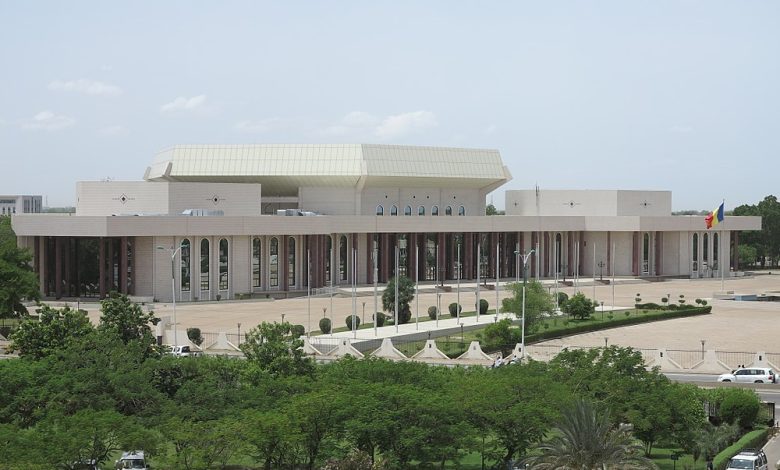N’Djamena

N’Djamena, the metropolis standing as the capital of Chad, finds its abode on the nation’s southwestern boundary, adjacent to Cameroon. Nestled along the east bank of the Chari River, where it converges with the Logone River, this city rests upon an alluvial plain prone to inundation during the rainy season spanning from July to September. Its genesis traces back to 1900, across the Chari River from Fort-Fureau (known as Kousseri), where the French colonial troops vanquished and eliminated the Sudanese adventurer Rābiḥ al-Zubayr, who had forged a military dominion over the eastern regions of Lake Chad. Originally dubbed Fort-Lamy in honour of a fallen French major from the aforementioned battle, N’Djamena remained a diminutive Kotoko settlement until the dawn of Chad’s independence in 1960. The appellation transitioned to N’Djamena in 1973, amidst the city’s occupation by Libyan forces during the civil strife erupting in the mid-1960s.
Situated amidst the heart of regions flourishing with cotton cultivation, cattle husbandry, and piscatorial endeavours, N’Djamena assumes a pivotal role as a bustling market nexus. It hosts a refrigerated abattoir and serves as the headquarters for numerous financial and light-industrial enterprises. The inception of the University of N’Djamena (formerly known as the University of Chad) in 1971, coupled with the establishment of the National School of Administration in 1963, underscores its academic significance. The National Museum (established in 1963) operates under the aegis of the National Institute of Human Sciences (founded in 1961), boasting an assortment of exhibits specializing in palaeontology, prehistory, and ethnography. Furthermore, the regional bastion of the Lake Chad Basin Commission is ensconced within the city’s confines. N’Djamena maintains extensive road connections with Nigeria, Sudan, and the Central African Republic, in addition to prominent Chadian municipalities such as Abéché and Sarh. It boasts an international aviation hub to facilitate connectivity. The populace tallied at approximately 818,600 within the city limits and an urban conurbation tallying 993,492, as of the preliminary census data in 2010.
History
N’Djamena’s story unfolds like a saga, marked by both growth and conflict. Here’s a closer look:
1. French Colonial Era (1900-1960):
- Founded in 1900 as Fort-Lamy by French forces, named after a fallen French officer.
- Gradually developed into a key trading hub and the regional capital.
- Served as a crucial airbase during World War II, briefly targeted by German forces.
- Witnessed the establishment of the first bank branch in 1950.
2. Transition and Turmoil (1960-1982):
- Gained independence in 1960 and was renamed N’Djamena in 1973.
- The city became embroiled in the Chadian Civil War, experiencing destruction and population displacement in 1979 and 1980.
- Faced foreign intervention during the Chadian-Libyan conflict, leading to further instability.
3. A Period of Regaining Footing (1982-Present):
- Following the conflict’s conclusion, N’Djamena witnessed a gradual return of residents and rebuilding efforts.
- The city’s population boomed due to internal displacement seeking refuge, surpassing the one-million mark by the 2010s.
- Despite relative stability, the city faced rebel attacks in 2006 and 2008.
Key Points to Remember:
- N’Djamena’s colonial roots laid the foundation for its growth as a trading center.
- The city bore the brunt of the Chadian Civil War and foreign intervention.
- Despite the challenges, N’Djamena has shown resilience and continues to be a vital economic and political hub for Chad.
Geography
N’Djamena sits at the coordinates 12°06′36″N 15°03′00″E, where the Chari and Logone rivers converge.
Although primarily serving as an administrative hub, the city encompasses the Nassara Strip commercial district and various residential neighborhoods like Mbololo, Chagoua, Paris Congo, and Moursal. The central commercial artery of the city is the Avenue Charles de Gaulle.
Environmental conditions in N’Djamena are concerning, with it being recognized as Africa’s most polluted city.
The climate in N’Djamena is characterized by a hot semi-arid climate (Köppen BSh), featuring a brief wet season and an extended dry period. Despite an average annual rainfall of around 510 mm (20 in), the city falls under the semi-arid classification due to significant evapotranspiration. The wet season typically spans from June to September, peaking in August, while the dry season dominates the rest of the year. N’Djamena registers among the hottest major cities globally, with monthly high temperatures consistently exceeding 32 °C (90 °F) except in August. The hottest temperatures generally occur from March to May, just before the onset of heavier rains.
Economy
Agricultural activities form the backbone of N’Djamena’s economy, engaging around 80% of its population in farming-related endeavours such as crop cultivation and livestock rearing. The city’s economy heavily depends on favourable weather conditions, leading to challenges during years with low rainfall. N’Djamena receives financial support from entities like the World Bank and the African Development Bank. There’s a notable demand for skilled labourers in sectors like oil, gas, and foreign NGOs, as well as in medical services and English teaching. Residents of N’Djamena are subject to taxation, capped at 60% of their net income.